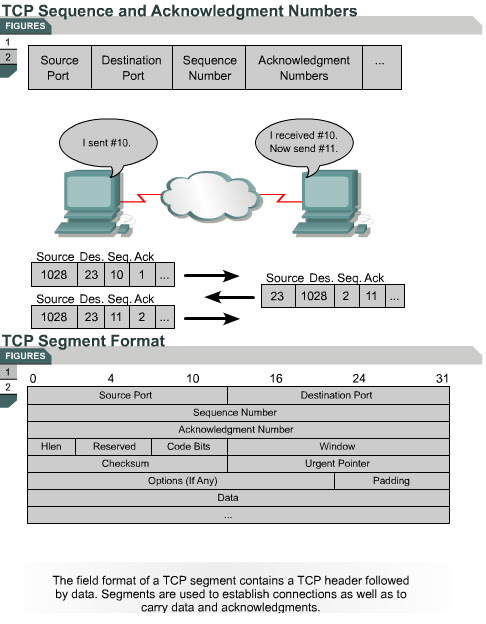Sequencing numbers
10.1.5 TCP breaks data into segments. After the synchronization process occurs and the window size has been established, the data segments are transported from the sender to the receiver. The data segments must be reassembled after all the data is received. There is no guarantee that the data will arrive in the order it was transmitted. TCP applies sequence numbers to the data segments that are transmitted so that the receiver can reassemble the bytes in their original order. This way, if TCP segments arrive out of order, the segments will still be assembled correctly.
These sequencing numbers also act as reference numbers so that the receiver will know if it has received all of the data. They also identify the missing data pieces to the sender so it can retransmit the missing data. This offers increased efficiency since the sender only needs to resend the missing segments instead of the entire set of data.
Each TCP segment is numbered before transmission.
The sequence number portion comes after the destination port in the segment format. At the receiving station, TCP uses the sequence numbers to reassemble the segments into a complete message. If a sequence number is missing in the series, that segment is retransmitted.
The next page discusses positive acknowledgments.



No comments:
Post a Comment